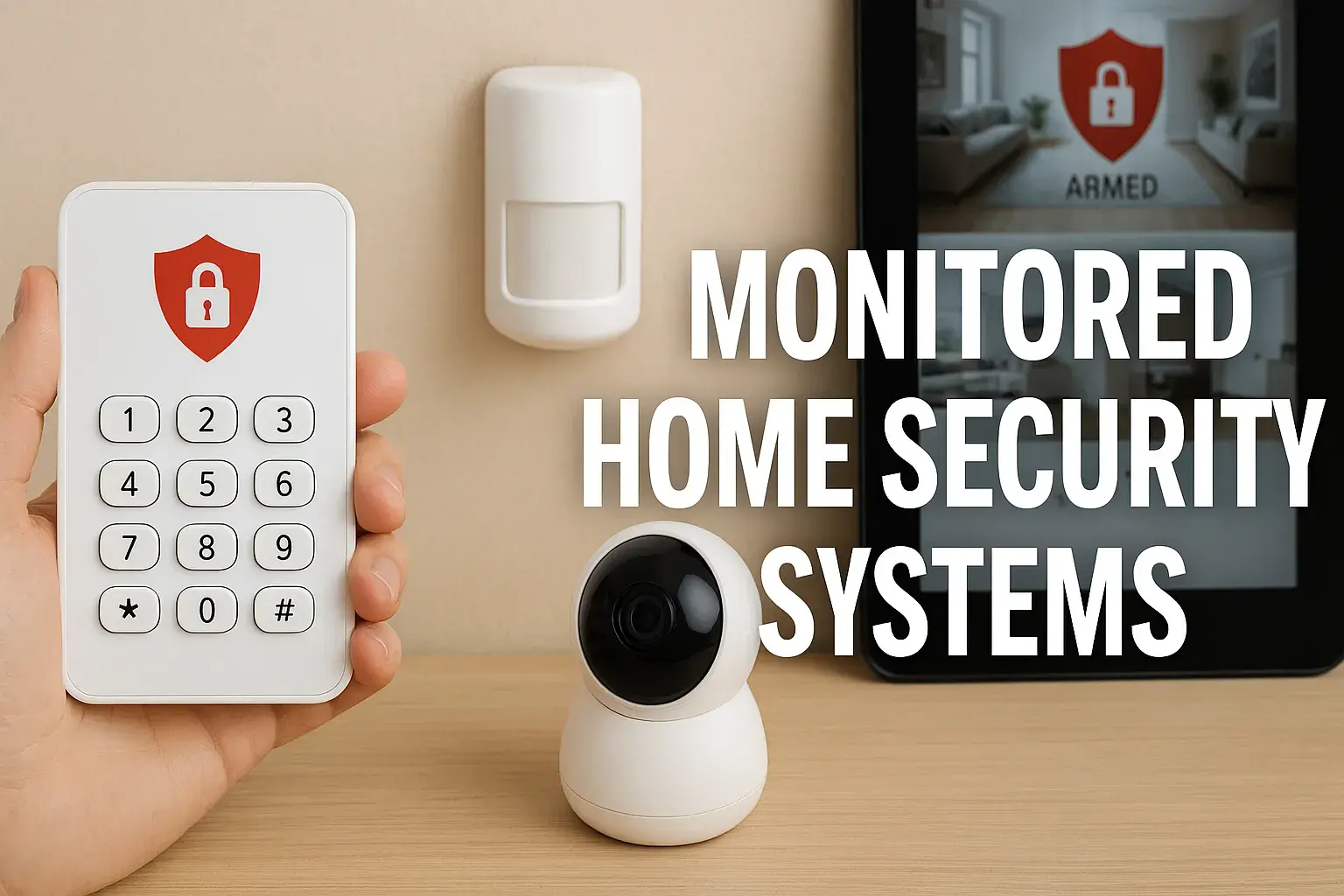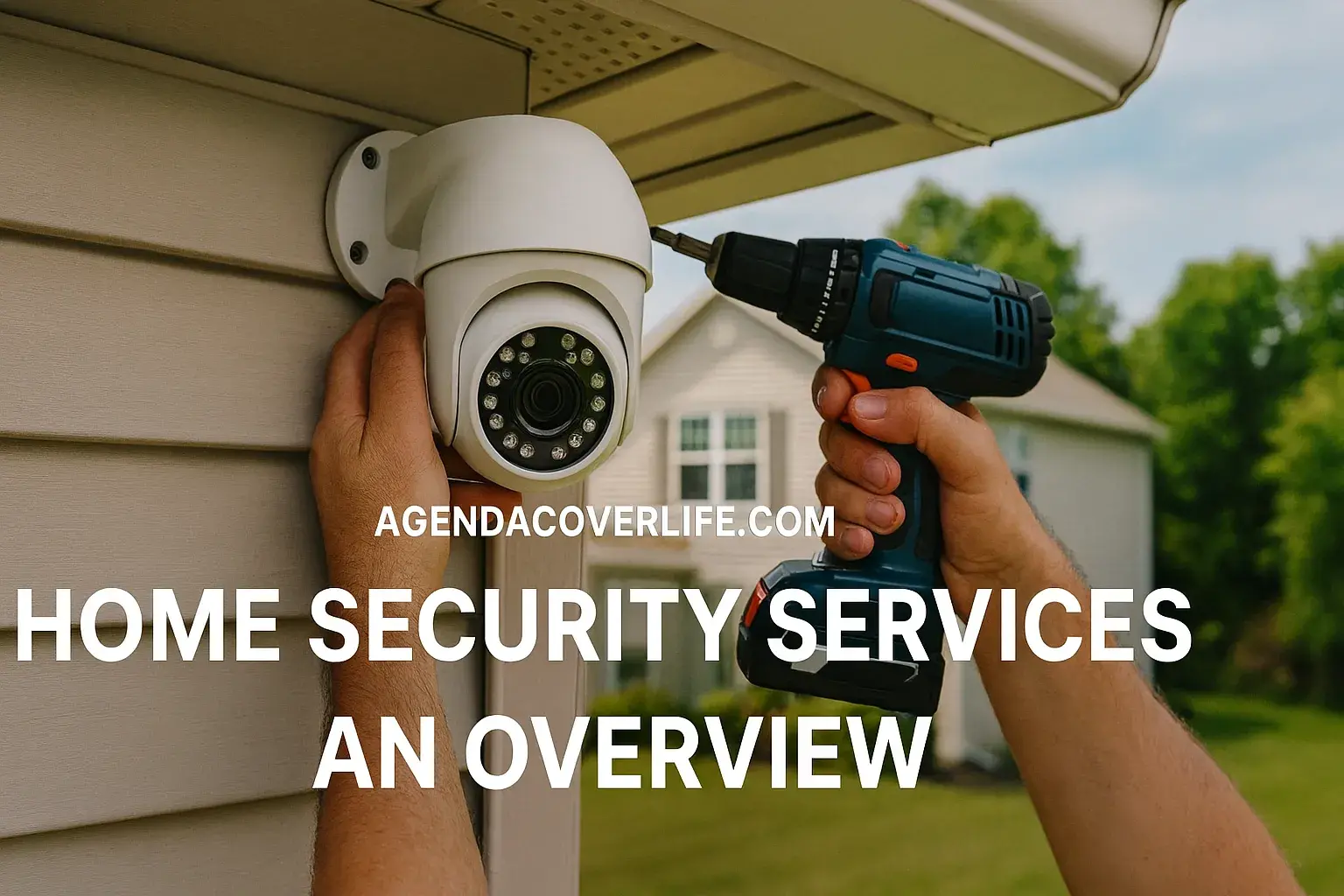Key Points on Monitored Home Security Systems
- Research suggests that monitored home security systems offer enhanced protection through 24/7 professional oversight, potentially reducing burglary risks by up to three times compared to unprotected homes, though effectiveness can vary based on location and system quality.
- It seems likely that top providers like SimpliSafe, ADT, and Vivint provide reliable options with features such as smart integration and quick emergency response, but user experiences highlight debates around costs versus DIY alternatives.
- Evidence leans toward monitored systems providing greater peace of mind for families, especially in high-crime areas, while acknowledging that unmonitored systems may suffice for tech-savvy homeowners seeking affordability.
What Are Monitored Home Security Systems?
Monitored home security systems involve sensors, cameras, and alarms connected to a professional monitoring center that responds to alerts in real-time. Unlike self-monitored setups, these systems ensure that if an intrusion, fire, or other emergency is detected, trained operators can verify the threat and contact authorities or homeowners immediately. Popular components include door/window sensors, motion detectors, and smart cameras, often integrated with apps for remote control.
For more details on how these systems operate, check resources from trusted sites like SafeWise or ADT.
Benefits for Homeowners
Monitored systems deter potential intruders visibly and provide rapid response times, which can be crucial in emergencies. They often qualify for home insurance discounts of 5-20%, and modern versions integrate with smart home devices for added convenience. However, some users note that while they enhance safety, no system is foolproof against determined threats.
Explore benefits further on sites like Vivint's resource page.
Choosing the Right System
When selecting a monitored home security system, consider factors like home size, budget, and desired features. Prioritize systems with flexible contracts, reliable customer support, and compatibility with existing smart devices. Reviews from 2025 indicate that systems from SimpliSafe and Ring excel in ease of use, while ADT offers robust professional installation.
For comparisons, refer to expert reviews on CNET or U.S. News.
Monitored home security systems represent a cornerstone of modern residential protection, blending advanced technology with professional oversight to safeguard properties against intrusions, fires, and other threats. As an evolving industry, these systems have seen significant advancements in 2025, incorporating AI-driven features, seamless smart home integration, and enhanced user accessibility. This comprehensive guide delves into every aspect of monitored home security systems, from their foundational mechanics to emerging trends, helping homeowners make informed decisions. Whether you're a first-time buyer or upgrading an existing setup, understanding these systems can empower you to enhance your home's safety while potentially lowering insurance premiums and increasing property value.
Understanding Monitored Home Security Systems
At their core, monitored home security systems are networked setups designed to detect unauthorized entry or hazards and alert a central monitoring station. Unlike basic alarms that simply sound a siren, monitored systems ensure continuous surveillance by professionals who can respond 24/7. Key components typically include:
- Sensors and Detectors: Door and window contacts, motion sensors, glass-break detectors, and environmental sensors for smoke, carbon monoxide, or flooding.
- Control Panels and Hubs: Central units that arm/disarm the system, often with touchscreens or voice controls.
- Cameras and Video Surveillance: High-definition indoor/outdoor cameras with night vision, two-way audio, and cloud storage.
- Alarms and Notifications: Sirens, strobe lights, and app-based alerts for smartphones.
These elements work in tandem via wireless or wired connections, transmitting signals to a monitoring center through cellular, Wi-Fi, or landline backups for reliability. In 2025, many systems emphasize wireless technology to minimize installation disruptions, making them ideal for renters or older homes.
The market for these systems is booming, with projections indicating growth from USD 72.4 billion in 2025 to USD 109.4 billion by 2030, driven by rising concerns over property crime and smart home adoption (MarketsandMarkets). Homeowners in urban areas, where burglary rates can exceed 1 in 1,000 households annually, particularly benefit from this proactive approach.
How Monitored Home Security Systems Work
The operational flow of a monitored home security system is straightforward yet sophisticated. When armed, sensors monitor for triggers like opened doors or detected motion. Upon activation:
- Detection Phase: A sensor trips, sending a signal to the control panel.
- Verification: The panel assesses the alert (e.g., distinguishing between a pet and an intruder via AI).
- Transmission: Data is sent to the monitoring center, often within seconds, using encrypted cellular signals to avoid hacking.
- Response: Operators attempt to contact the homeowner. If unreachable or if the threat is confirmed, they dispatch emergency services.
This process contrasts with unmonitored systems, where alerts go solely to the user, potentially delaying response during absences or sleep. Professional monitoring adds layers of verification, reducing false alarms—which plague about 94-98% of police-dispatched calls (Security.org)—through video confirmation or two-way audio.
Integration with smart devices further enhances functionality. For instance, systems like those from Vivint can link with Amazon Alexa or Google Home, allowing voice commands to lock doors or view live feeds. Reliability is key; top systems boast 99.9% uptime with battery backups for power outages.
Benefits of Monitored Home Security Systems
Investing in a monitored system yields multifaceted advantages, backed by industry data and user testimonials. Primary benefits include:
- Enhanced Deterrence and Protection: Visible cameras and signs deter up to 60% of potential burglars (University of North Carolina study). Monitored response ensures help arrives faster, with average police arrival times dropping from 10-15 minutes in unmonitored scenarios.
- 24/7 Professional Oversight: Unlike DIY monitoring, professionals handle alerts, providing peace of mind for travelers or elderly residents. This is especially valuable for fire or medical emergencies, where systems can auto-dispatch aid.
- Insurance Savings: Many insurers offer discounts of 5-20% on premiums for monitored systems, potentially saving hundreds annually (Insurance Information Institute).
- Smart Home Synergy: Modern systems integrate with thermostats, lights, and locks for automated responses, like illuminating entryways during alerts.
- Psychological Comfort: Knowing experts are watching reduces stress; surveys show 85% of users report feeling safer (SafeHome.org).
However, these benefits come with considerations, such as monthly fees, which some view as unnecessary if self-monitoring suffices. Still, for high-risk households, the added layer of security often outweighs the costs.
Monitored vs. Unmonitored Home Security Systems: A Detailed Comparison
Choosing between monitored and unmonitored systems hinges on lifestyle, budget, and risk tolerance. Here's a breakdown:
| Aspect | Monitored Systems | Unmonitored Systems |
|---|---|---|
| Monitoring | Professional 24/7 center responds to alerts | Self-monitored via app notifications |
| Response Time | Quick dispatch to authorities | Depends on user availability |
| Cost | $20-60/month plus equipment | Lower; often $0-15/month |
| Reliability | High, with backups and verification | Variable: misses alerts if the phone is off |
| Best For | Families, frequent travelers, high-crime areas | Tech-savvy users, budget-conscious homes |
| Pros | Peace of mind, insurance discounts | Affordable, no contracts |
| Cons | Ongoing fees, potential false alarm fines | Increased personal responsibility |
Monitored systems excel in scenarios requiring immediate action, as unmonitored ones burden users with verification—potentially ineffective during vacations. Data from SafeWise indicates monitored setups reduce successful burglaries by 33%, emphasizing their edge in comprehensive protection.
Top Monitored Home Security Providers in 2025
Several companies dominate the market, each with unique strengths. Based on 2025 reviews from CNET, U.S. News, and Forbes:
- SimpliSafe: Affordable (starting at $29.99/month), DIY installation, no contracts. Excels in flexibility and app integration.
- ADT: Legacy provider with 150+ years; professional installation, extensive monitoring ($45-60/month). Ideal for comprehensive coverage.
- Vivint: Smart home-focused, with AI cameras and energy management. Pricing from $39.99/month; strong for tech enthusiasts.
- Ring (Amazon-owned): Budget-friendly ($10-20/month), excellent cameras. Best for Alexa users but criticized for privacy concerns.
- Abode: Versatile with self or pro monitoring ($6.99-21.99/month); supports Apple HomeKit.
When evaluating, check for UL-certified monitoring centers and customer ratings—Vivint and ADT score high on response times (under 30 seconds).
Costs Associated with Monitored Home Security Systems
Budgeting is crucial, as costs vary by provider and customization. Average breakdowns for 2025:
| Cost Category | Average Range | Details |
|---|---|---|
| Equipment | $150-800 upfront | Basic kits (sensors, hub); add-ons like cameras, extra |
| Installation | $0-500 | DIY free; professional $99-300 |
| Monitoring Fees | $10-60/month | Basic $20; premium with video $40+ |
| Add-Ons | $50-200 per device | Smart locks, flood sensors |
| Total First-Year | $300-1,500 | Includes setup and 12 months of monitoring |
Factors influencing costs include home size (larger homes need more sensors) and features like video analytics. No-contract options like Ring minimize long-term commitments, while bundles can reduce expenses. NerdWallet notes potential ROI through insurance savings offsetting 20-50% of annual fees.
Tips for Choosing and Installing a Monitored System
Selecting the right system involves assessing needs:
- Evaluate Risks: Consider local crime rates via FBI data; prioritize cameras in vulnerable areas.
- Test Compatibility: Ensure integration with existing smart devices.
- Read Reviews: Sites like Consumer Reports highlight reliability.
- Opt for Scalability: Start basic and expand.
- Professional vs. DIY Installation: Monitored systems often benefit from expert setup to avoid gaps.
Post-installation, regular testing (monthly) and firmware updates maintain efficacy.
Future Trends in Monitored Home Security
The industry is shifting toward intelligence and connectivity. Key 2025 trends:
- AI and Machine Learning: Systems like those from Pelco use AI for predictive alerts, reducing false positives by 70%.
- Biometrics and Facial Recognition: Enhancing access control without keys.
- Sustainability Features: Solar-powered cameras and energy-efficient hubs.
- 5G and Edge Computing: Faster, more reliable monitoring.
- Privacy-Focused Innovations: Encrypted data and user controls amid rising concerns.
ADT predicts widespread adoption of voice-activated systems and integrated health monitoring for elderly care.
In conclusion, monitored home security systems provide robust, reliable protection in an uncertain world, evolving to meet modern demands. By weighing benefits against costs and choosing reputable providers, homeowners can achieve lasting security.
Frequently Asked Questions (FAQ)
What is the difference between monitored and unmonitored home security systems?
Monitored systems connect to a 24/7 professional center for response, while unmonitored systems rely on user alerts via apps.
How much does a monitored home security system cost?
Equipment starts at $150-800, with monitoring fees of $10-60/month. Installation may add $0-500.
Are monitored home security systems worth it?
Yes, for peace of mind and quick emergency response, especially in high-risk areas, though unmonitored options suit budget needs.
Can pets trigger false alarms in monitored systems?
Many systems use pet-immune sensors, ignoring animals under 40-80 lbs; AI further minimizes issues.
Do monitored systems work without the internet?
Yes, via cellular backups; most include redundancies for outages.
What happens if the power goes out?
Battery backups keep systems operational for 24+ hours, ensuring signals reach monitoring centers.
Can I install a monitored system myself?
Many like SimpliSafe are DIY-friendly, but professional installation ensures optimal coverage.
Do these systems qualify for insurance discounts?
Often yes, 5-20% off premiums; check with your provider.
How do I choose the best monitored home security system?
Consider budget, features, reviews, and compatibility; top picks include ADT and Vivint.
Are monitored systems secure from hacking?
Reputable providers use encryption and multi-factor authentication; regular updates enhance protection.





